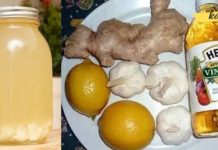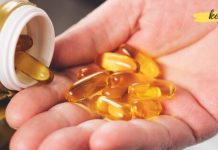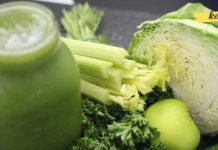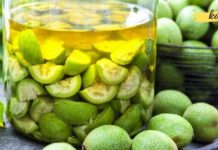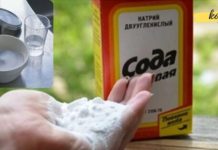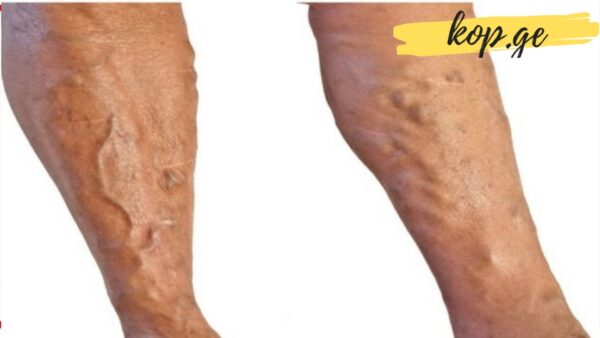How to Treat Veins? Folk Remedies That Many People Say Are Very Effective!
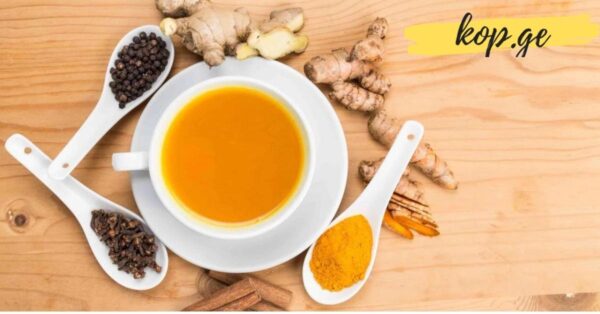
Problems with veins, especially varicose veins, are very common. They often appear after pregnancy, prolonged standing, lack of movement, or even due to hereditary factors. While modern medicine offers a range of treatments, from minimally invasive procedures to surgery, many people also turn to traditional folk remedies that have been passed down through generations.
One of our readers shared her personal experience of using natural remedies for vein problems. Here is her story, followed by detailed recipes that you can try at home—always keeping in mind that it’s best to consult a doctor before beginning any kind of treatment.
A Reader’s Experience
“After my second childbirth, I noticed that my once smooth and beautiful legs were covered with swollen, bluish veins. They not only looked unattractive but also caused discomfort. I didn’t want to rely solely on medication, so I decided to explore natural, folk remedies. I gathered recipes from different sources, discussed them with my doctors, and then started the treatments. The results surprised me. My legs looked and felt better, and I want to share what worked for me so others might also benefit,” she wrote.
Her approach combined different natural infusions, tinctures, and topical applications. Below are the remedies she used, with instructions on how to prepare and apply them.
1. Horse Chestnut Tincture
Horse chestnut is perhaps the most famous natural remedy for varicose veins, thanks to its ability to strengthen blood vessel walls and improve circulation.
Ingredients:
1 tablespoon of horse chestnut flowers and fruit, finely chopped
100 ml of vodka or strong alcohol
Preparation:
Place the chopped horse chestnut in a glass jar, pour the alcohol over it, and store in a cool, dark place for one week. Shake occasionally.
Usage:
Take 30 drops three times daily before meals, with a glass of water. Many people report less swelling and reduced heaviness in the legs after consistent use.
2. Hazelnut Leaf Infusion
Hazelnut leaves are rich in tannins and flavonoids, which can strengthen blood vessels.
Ingredients:
1 tablespoon of dried hazelnut leaves
1 cup boiling water
Preparation & Usage:
Pour boiling water over the leaves, let it steep like tea, and strain. Drink one-quarter cup four times daily. This gentle infusion supports overall vascular health.
3. Kalanchoe Tincture for Massage
Kalanchoe is a common houseplant with powerful healing properties. Used externally, it can reduce inflammation and improve circulation.
Ingredients:
Half a bottle of chopped Kalanchoe leaves
Fill the rest of the bottle with vodka or alcohol
Preparation:
Seal the bottle and leave it in a cool, dark place for one week, shaking it daily.
Usage:
Massage the tincture into your legs every evening, starting at the feet and moving upward toward the thighs. The discomfort usually eases quickly, but for visible results, such as reducing the appearance of spider veins, consistent use for three to four months is recommended.
4. Sweet Clover (Berula) Herbal Baths
For tired, swollen, varicose legs, herbal baths can be soothing and therapeutic.
Ingredients:
200 g of dried sweet clover (or berula)
Boiling water
Preparation:
Place the dried herb in a bowl, pour boiling water over it, cover, and steep for one hour.
Usage:
Soak your feet in the warm infusion for 30 minutes. Keep the water warm by occasionally adding hot water. This method not only helps varicose veins but can also benefit people with high blood pressure, as it may gently lower arterial pressure.
5. Wormwood with Yogurt
This is an unusual but traditional external compress remedy. Wormwood is known for its anti-inflammatory properties.
Ingredients:
A handful of fresh young wormwood, finely chopped
0.5 liters of yogurt
Preparation & Usage:
Mix the wormwood with yogurt. Spread the mixture on a piece of gauze or soft cloth and place it over the most affected areas of your legs. Elevate your legs on a pillow and cover with plastic wrap. After 30 minutes, remove the compress. This treatment can reduce swelling and improve the look of bulging veins.
6. Hops Infusion
Hops, usually known as an ingredient in beer, also have medicinal uses. They can improve circulation when taken internally and soothe the veins when applied externally.
Ingredients:
1 tablespoon of hop cones
1 cup boiling water
Preparation:
Chop the hop cones, pour boiling water over them, and place the cup in a steam bath for 15 minutes. Strain before use.
Usage:
Drink the infusion three times a day before meals. For added effect, soak a piece of gauze in the infusion and apply it as a compress to enlarged veins.
Important Considerations
These remedies can be effective, but they should never completely replace medical advice or treatment. Varicose veins are not only a cosmetic issue—they may indicate problems with circulation that require professional attention. Herbal remedies may help reduce discomfort, swelling, and the appearance of veins, but they work best when combined with healthy lifestyle choices.
Tips for Vein Health:
Avoid standing or sitting for long periods without movement.
Elevate your legs when resting to improve circulation.
Wear compression stockings if recommended by a doctor.
Maintain a healthy weight to reduce pressure on your legs.
Exercise regularly, especially walking or swimming, to support vascular health.
Conclusion
The experience shared by our reader highlights that folk remedies can provide significant relief for vein problems when used consistently and wisely. From horse chestnut tinctures to herbal baths and soothing compresses, nature offers a variety of solutions that many people have found effective.
Still, it’s essential to consult a healthcare professional before beginning these treatments, especially if you suffer from chronic illnesses like diabetes, high blood pressure, or blood clotting disorders. Natural remedies can complement conventional medicine, but they are not a substitute for it.
If used carefully, these simple and inexpensive treatments—often made from plants you can find in your garden or kitchen—might just help you restore comfort, improve circulation, and feel confident in your legs again.





